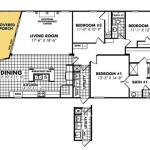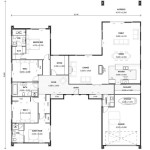Home Care Care Plan Template
A home care care plan is a comprehensive document that outlines the individualized needs and services required for a person receiving home care. It serves as a roadmap for the care team, ensuring consistency and continuity of care. This plan encompasses the individual's medical, physical, emotional, and social needs, and it is regularly reviewed and updated to reflect changes in their condition. A well-structured home care care plan template acts as a vital tool for achieving optimal health outcomes and promoting a positive experience for the individual in the comfort of their own home.
Essential Components of a Home Care Care Plan Template
A comprehensive home care care plan template should encompass several key components to ensure effective care delivery. These components include:
1. Client Information
The first section should contain the client's personal information, including their name, address, date of birth, contact information, and emergency contacts. This section should also include details about their insurance information, as well as any relevant medical history, including pre-existing conditions, allergies, and medications. It is crucial to include any advance care directives or end-of-life preferences, ensuring these wishes are respected and followed.
2. Assessment and Goals
This section outlines the client's current health status, including their physical, cognitive, and emotional needs. This section should include a detailed assessment of the individual's functional abilities, such as their ability to perform activities of daily living (ADLs), including bathing, dressing, eating, and toileting. It should also address their cognitive abilities, mobility, and communication skills. Based on the assessment, specific goals are defined, focusing on improving the individual's health, functional abilities, and overall well-being.
3. Care Plan
This is the core section of the home care plan template, outlining the specific services and interventions required to support the client's needs. It should include details about the frequency and duration of each service, as well as the qualifications and expertise of the care providers. The care plan should also specify the time of day or week when services will be provided, ensuring flexibility to align with the client's schedule and preferences. This section may include services such as:
- Personal care assistance (bathing, dressing, toileting)
- Medication administration
- Wound care
- Nutritional support
- Companionship and emotional support
- Transportation
- Respite care
- Homemaker services
4. Communication
This section is crucial for fostering open and effective communication between the care team, the client, and their family or caregivers. It outlines protocols for reporting changes in the client's condition, notifying the appropriate healthcare professionals, and documenting any significant events or incidents. Frequent communication ensures that everyone involved is informed, and adjustments to the care plan can be made promptly based on the client's evolving needs.
5. Evaluation and Review
The care plan must be regularly reviewed and updated to reflect the client's progress and any changes in their condition. This involves evaluating the effectiveness of the current services and strategies, identifying any areas for improvement, and making adjustments to the care plan accordingly. This ongoing evaluation ensures that the client receives the most appropriate and effective care throughout their journey. Regular meetings with the care team, the client, and their family or caregivers will be necessary to discuss progress, concerns, and any necessary adjustments to the plan.
Benefits of Using a Home Care Care Plan Template
Using a standardized home care care plan template offers several benefits, both for the individual receiving care and for the care providers:
- Ensures continuity of care: A well-defined plan ensures that all care providers are working from the same document, fostering consistent care delivery and minimizing confusion or conflicting instructions. This contributes to better health outcomes and a more positive experience for the individual.
- Improves communication: The template provides a clear framework for communication between all parties involved, including the individual, their family, and the care team, promoting open communication and efficient information sharing.
- Enhances accountability: The template sets clear expectations for all parties involved, promoting accountability and ensuring that everyone is fulfilling their roles effectively. This transparency and clarity help ensure that the individual receives high-quality care.
- Facilitates efficient care coordination: The template streamlines the care planning process, enabling the team to quickly identify and prioritize the individual's needs. This efficiency helps optimize care delivery and maximizes the use of resources.
- Promotes client-centered care: The template emphasizes the individual's preferences and goals, ensuring that the care provided aligns with their needs and wishes. This client-centered approach fosters a more fulfilling and dignified experience for the individual.
Key Considerations for Home Care Care Plan Template
When designing a home care care plan template, it's crucial to consider several key factors to ensure its effectiveness and meet the needs of the individual receiving care. These include:
- Individualized care: The template should be flexible enough to accommodate the unique needs and preferences of each individual. It should not be a rigid document, but rather a living document that evolves with the individual's changing needs.
- Cultural sensitivity: The plan should consider the individual's cultural background and preferences, ensuring that care is provided in a culturally sensitive manner.
- Family involvement: The template should provide opportunities for family or caregivers to be actively involved in the care planning process, ensuring their perspectives and preferences are considered. This fosters a sense of partnership and promotes the individual's well-being.
- Regular review and updates: The template should emphasize the importance of regular reviews and updates to ensure that the plan remains relevant and responsive to the individual's changing needs. This ongoing evaluation and adjustment help ensure that the individual receives the most effective and personalized care possible.
By incorporating these key considerations, healthcare providers can develop effective and individualized care plans that enhance the quality of life for individuals receiving home care services.

Home Health Care Plan Template

Home Health Care Plan Template

Elderly Care Plan Template Example Free

Care Plan Template Family Carer Tena

Nursing Home Care Plan Template In Pages Word Google Docs Net

Elderly Care Planning Activity Pack Teacher Made Twinkl

Healthcare Packs Care Plans Referral Forms Anatomystuff

Free Printable Home Health Care Chart

The Essential Guide To Planning Home Health Care Free Planners And Templates Nurseregistry

Nursing Care Plan Template Printable Instant Print Land








